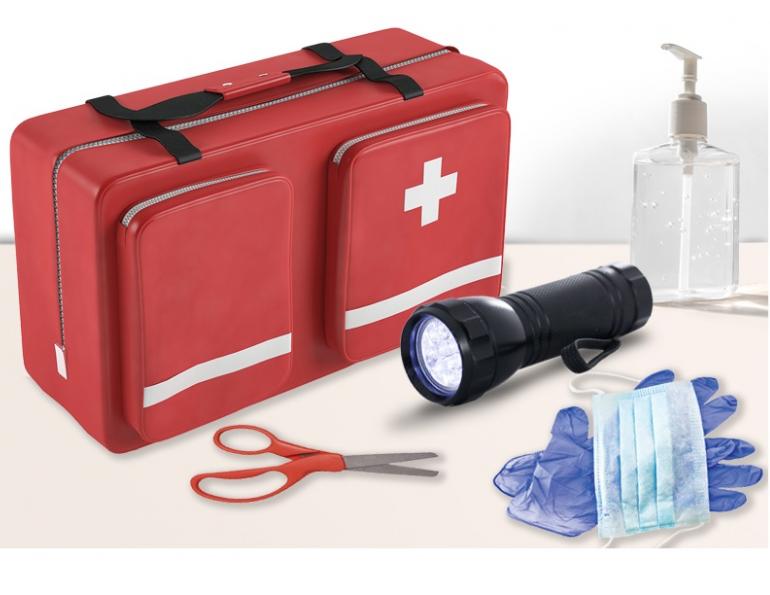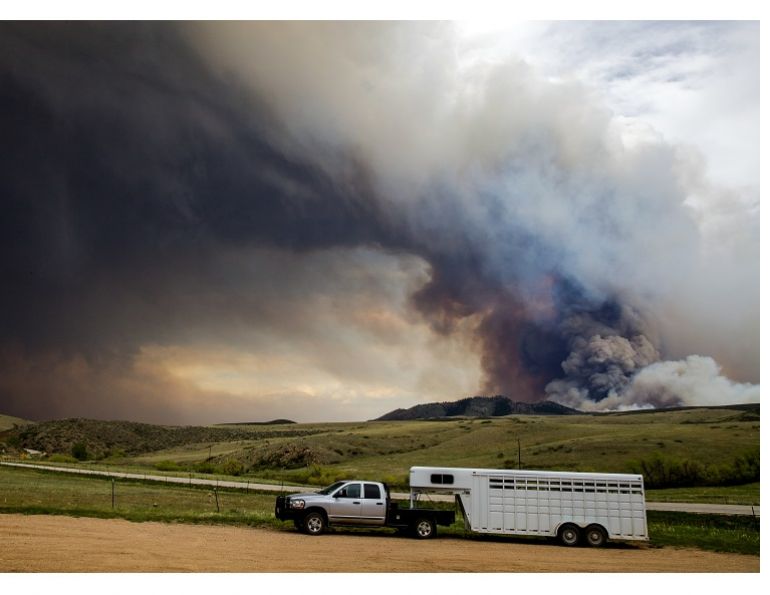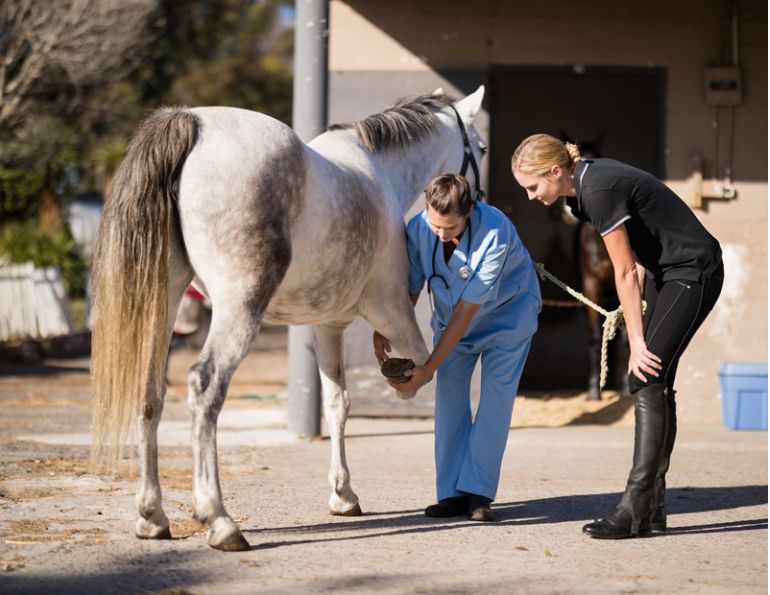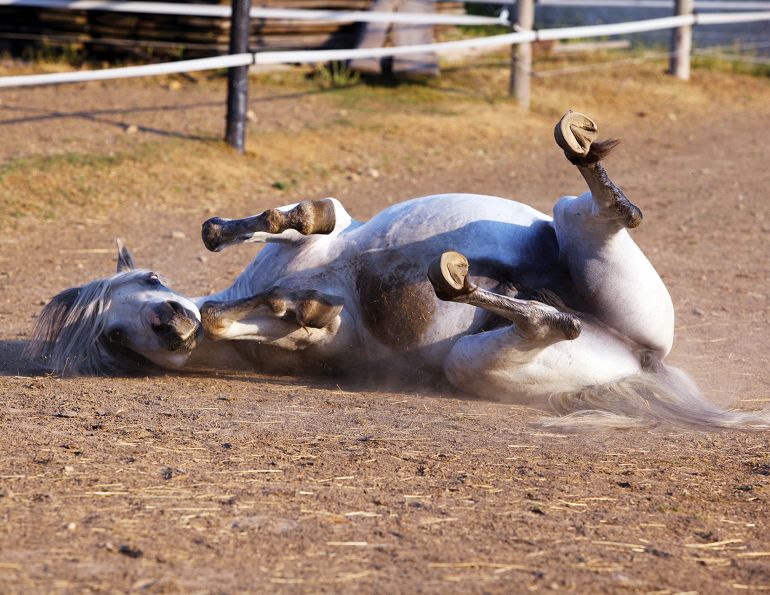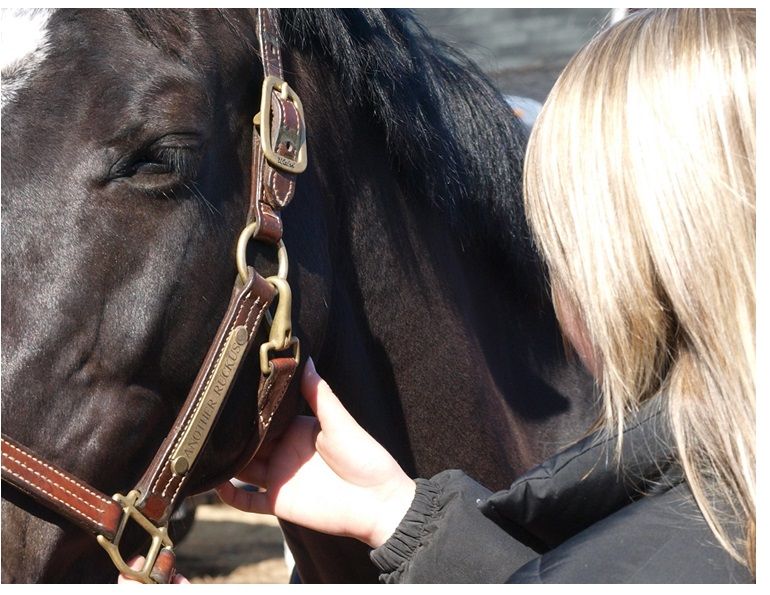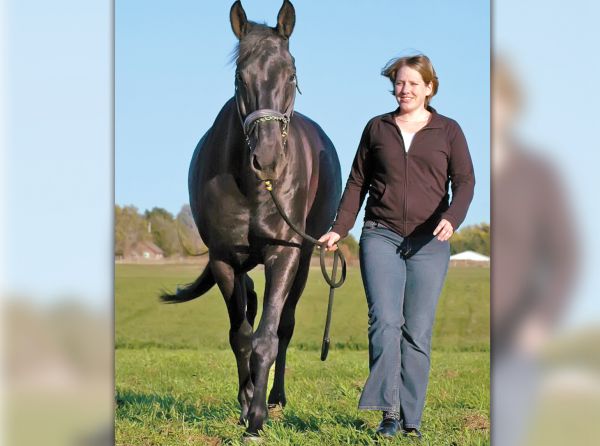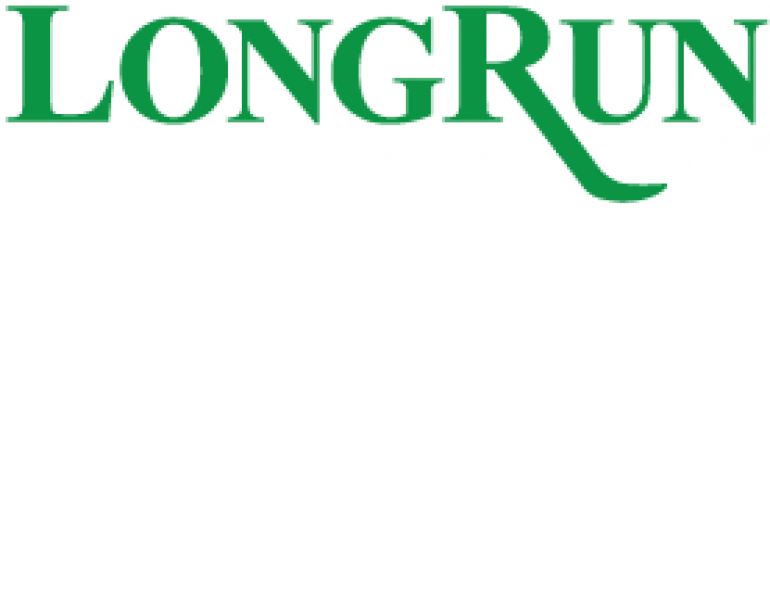Generally, first aid equipment is inexpensive, and you can create a comprehensive kit for a reasonable cost, saving yourself hundreds of dollars in unnecessary vet calls.
“Every horse owner should have a well-stocked first aid kit on hand,” says Heather Davis, executive director, Equi-Health Canada. “All too often we hear of folks with items scattered all over the place and they can’t find what they need when they need it.”
Keep a comprehensive first aid kit for the barn, a travelling kit in the trailer, and an essentials kit to carry with you on a trail ride. Don’t forget to have a first aid kit for yourself!
Know where you draw the line — to do your own care or call a vet, says Gayle Ecker, director, Equine Guelph. “We are trying to teach people when to call the vet in, or when to talk to the vet on the phone.”
Equipment for the trailer should include not only medical needs but reflective vests, cones, and flashlights in case of a roadside breakdown.
For a recreational ride, plan for a typical risk. A ride on a quiet country road is different from one on wilderness trails. However, the kit should include things to control bleeding, small wounds, a hoof pick, and a hoof boot. Pack a folding penknife, and outfit the horse with a halter under the bridle and the shank packed or secured.
“Put a dog tag on either the halter or bridle or the D ring of the saddle with your name, horse’s name, and phone number,” says Ecker. “[If you fall off and are separated from your horse] they really help when someone finds the horse. It is useful to put two phone numbers, yours and one other person, one on each side.”
Keep an inventory list of everything in your first aid box and tape it inside the lid. Replace anything that has been used up or is past its due date.
Your First Aid Kit should contain:
60cc syringe – to flush wounds; administer oral fluids.
Alcohol swabs – good for cleaning small wounds or creating a cleaner site for injections.
Aloe wound gel – great for healing wounds naturally, as it has minerals, vitamins, amino acids and very strong antibacterial, antiviral and anti-fungal properties.
Antiseptic mouthwash – can be used for bug relief, on scratches and thrush, as well as rain rot and bot eggs.
Antiseptic wound cream – like Hibitane® cream or Furacin® ointment.
Blood Stop – helps stop serious bleeding wounds.
Bottle of saline solution – useful for cleaning out wounds in delicate places like around the eyes. A bottle of contact lens saline solution with a squirt nozzle is perfect.
Bulldog clip – used to hold a veterinary thermometer to tail for three-minute temp.
Cool Cast Emollient Leg Bandage – apply to help alleviate swelling.
Cotton roll – an absorbent bandage layer on smaller wounds.
Cotton swabs – to clean small or delicate wounds.
Diapers – an alternative bandage layer.
Duct tape – useful in any emergency, and especially good for hoof wraps as it is water-resistant, moldable, and fairly durable.
Epsom salts – mix with warm water to soak an abscessed foot or use in a poultice.
Face masks – minimize exposure to odours from necrotic tissue or protect yourself from spray from wounds/blood/pus.
Flashlight/head lamp – to help you see wounds in a gloomy stall or dark field.
Forceps or tweezers – for removing splinters, ticks, or other nasties.
Garbage bags – cover large wounds; clean up.
Gauze pads — when it comes to horses, bigger is better.
Gauze roll – used to hold the absorbent bandage layer.
Hand sanitizer – good for when a hose isn’t handy to ensure you’re not spreading germs.
Hoof pick.
Hot/cold pack – alleviates heat and muscle pain; useful when cold hosing an injury isn’t possible.
Iodine – or an antiseptic scrub such as Betadine® (povidone-iodine, or “tamed” iodine) or Nolvasan (chlorhexidine).
Latex gloves – keep your hands clean and free from germs and other gross messes.
Lipstick or chalk – mark sore spots upon investigation of pain.
Lubricating jelly, like Vaseline® – for the thermometer, and for protecting the tender skin of your horse’s heels from chapping if you have to cold-hose a leg injury for several days.
Medical adhesive tape – for securing bandages.
Mineral Ice® – alleviates heat and muscle pain.
Notepad/pencils – write down vitals, important phone numbers.
Peroxide – its bubbling action is good for cleaning dirt out of fresh wounds and for dealing with thrush. Don’t use it routinely on a healing wound as it will inhibit the healing process.
Plastic wrap – sterile and non-toxic, use as a single layer wound dressing to prevent wound contamination, fluid losses and pain from swelling.
Razors – to shave hair from around wounds.
Rubbing alcohol – for sterilizing instruments; can alleviate pain and itch of stings or bites and soothe sore joints and muscles.
Rope – used as lead.
Safety scissors – with rounded ends so you don’t accidentally cut into your horse if you’re snipping off a bandage.
Scrub brush – with fairly soft bristles to scrub larger wounds.
Self-adhesive bandages – such as Vetrap™, to secure and protect dressings, hold bandages in place.
Small aluminum pan – a clean space to set wound cream, bandages etc.
Spray bottle – fill with soap and water and use to clean delicate wounds.
Stethoscope – inexpensive ones can be purchased through medical supply stores or pharmacies for under $30.
Tampons – to insert into puncture wounds.
Thermometer — rectal veterinary thermometer or the plastic digital kind.
Thick sanitary pads – absorbent and good for applying direct pressure to a bleeding wound.
Treats – entice, calm, distract, reward.
Tube socks – cut out the toes and cover bandages for protection, spray with fly spray to keep insects away.
Vital signs card — Normal vs. Abnormal.
Wash cloth – clean and scrub wounds or use to dry hands.
Weight tape/tape measure – used to calculate weight of horse for medication doses.
Wet wipes – used to pre-clean wounds if really dirty; clean your hands.
First Aid Kit List is courtesy Equi-Health Canada
Also see Equine Emergency First Aid



